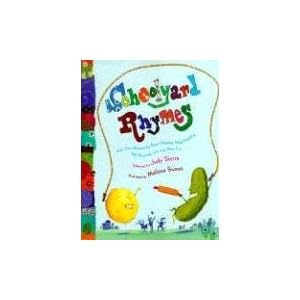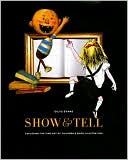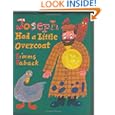 Bibliography -
Bibliography - Sierra, Judy. 2005. Schoolyard rhymes: Kids' own rhymes for rope skipping, hand clapping, ball bouncing, and just plain fun.
Plot Summary -
A collection of easy to remember schoolyard rhymes from various time periods and various countries. These kid create rhymes have been past down from generation to generation. They are created for jump skipping, hand clapping, ball bouncing, and just plain fun as the subtitle states.
Critical Analysis -
These entertaining rhymes are fun and cute, but some need to be considered for age appropriateness. All are very rhythmic and loaded with rhyme which helps them to be memorable. Some of them took me on a trip down memory lane. I can remember vividly hand clapping to "The Lady with the Alligator Purse." As I read it again, I realized that it is a frightening story about a lady kidnapping a baby. I never caught this as a child when I was hand clapping it. Another one which tickled my memory was "Roses are red/Violets are blue." I can remember going on endlessly with my friends trying to make up new lines for this old favorite.
Some of these schoolyard rhymes are not meant for younger children and others are total nonsense. On page 3, there is one about Miss Mary smoking a pipe. Some may have a problem with this, but it is overall meant to be rhyming nonsense and does not make smoking look fun. On pages 28-29, there are several that talk about girlfriend-boyfriend kissing. These probably should not be shared with small children especially the one in which a girl throws her boyfriend over her Granny's house without his underpants. An example of total nonsense is the one on page 7 about the judge. The illustration for this one makes the rhyme so much funnier because the reader can easily visualize what the rhyme is saying even though it is nonsense.
Concerning the illustrations, they are fantastic. Melissa Sweet uses watercolor and fabric collages to rope in the reader. On page 2, the banana, with his peeling partially split and wearing fudge topping and a cherry hat, is skipping rope and playing the piano. This picture alone will make the reading laugh, but it doesn't end there. Every page has rib-tickling pictures that add to the amusement of the rhymes. As previously stated, some illustrations help to make sense out of the nonsense of the rhymes. On page 17, the rhymes are about bubble gum and each one appears in a large pink circle of bubble gum inviting the reader to blow bubbles with their gum. Whether an adult reader uses this book to reminisce their childhood or new children are introduced to this fun packed book, it is an entertaining addition to any library.
Review Excerpts -
School Library Journal - "Sierra has selected some of the funniest and most memorable schoolyard rhymes available..."
Booklist - "Sweet's comical, mixed-media art adds to the wackiness of the rhymes, with jump ropes commanding a prominent position..."
Connections -
*Use to teach rhythm and rhyme.
*Have students say and do the motions with one like "Anna Banana" and then have them make up their own variations using different instruments and song titles.
*Have students select their favorites, decide what motion to do with it (like skipping rope, hand clapping, etc.) and then perform it for the class or even for a younger group of children.
*Share other schoolyard rhyme books like:
· Anna Banana: 101 Jump Rope Rhymes by Joanna Cole and illustrated by Alan Tiegreen. ISBN 9780688088095.
· Hand Clap! by Sara Bernstein. ISBN 9781558504264.
· Hopscotch, Hangman, Hot Potato, & Ha Ha Ha by Jack Maquire. ISBB 9780671763329.






